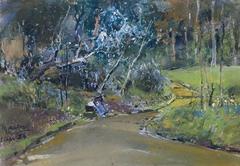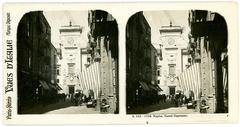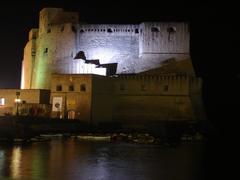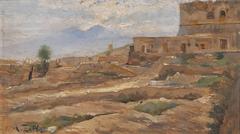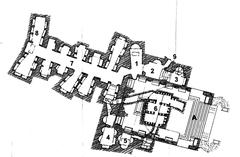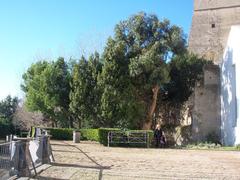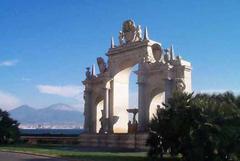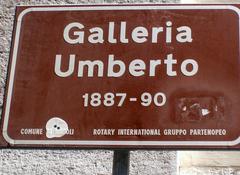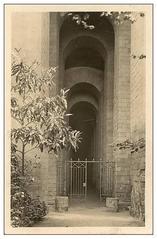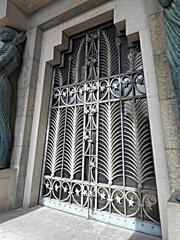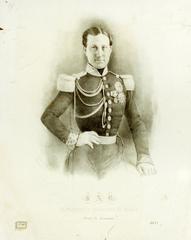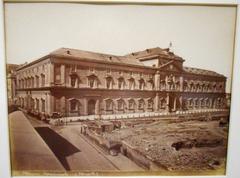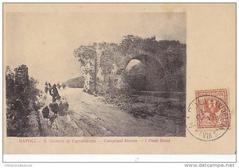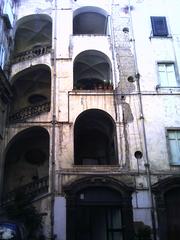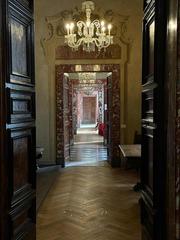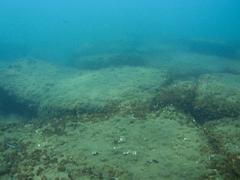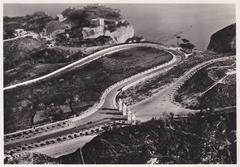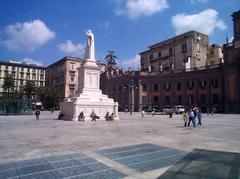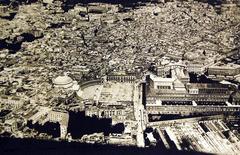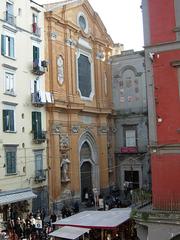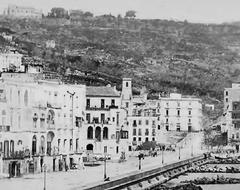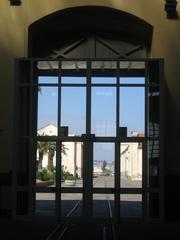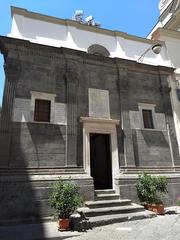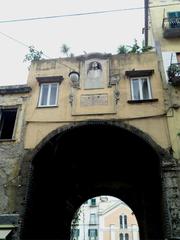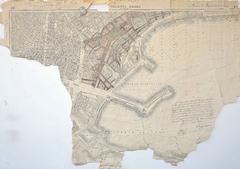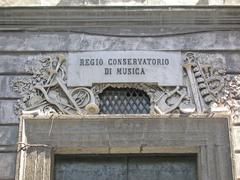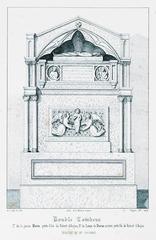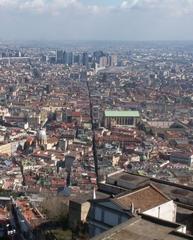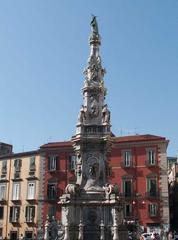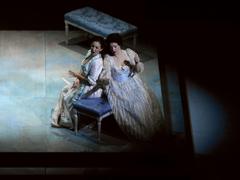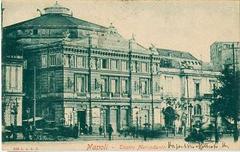
Museo Nazionale della Ceramica Duca di Martina: Visiting Hours, Tickets, and Naples Historical Sites Guide
Date: 04/07/2025
Introduction
Nestled atop the scenic Vomero hill within the elegant Villa Floridiana, the Museo Nazionale della Ceramica Duca di Martina stands as a premier destination for art, history, and culture enthusiasts in Naples. Set in a neoclassical villa surrounded by lush English-style gardens, this museum offers a journey through over six centuries of ceramic artistry, displaying masterpieces from Europe, Asia, and the Middle East. Established from the 19th-century collection of Placido de Sangro, Duke of Martina, the museum preserves more than 6,000 decorative art objects and reflects the city’s aristocratic heritage and its historic role as a crossroads of Mediterranean culture (Napoli Fans; OpenCampania; Wikipedia). Visitors can admire Italian majolica, Capodimonte porcelain, French and German faience, Chinese Ming and Japanese Edo period porcelains, all within architecturally refined spaces designed by Antonio Niccolini. Complementing its world-class collections, the museum features multilingual tours, accessibility services, and educational programs for all ages (Italy Magazine; Campania Artecard). The romantic gardens of Villa Floridiana, designed by Friedrich Dehnhardt, offer panoramic views of Naples, the Gulf, and Mount Vesuvius, adding natural beauty and historical ambiance to every visit (Napolike; Napolisotterranea). This guide provides essential information on visiting hours, tickets, highlights, accessibility, transportation, and nearby attractions to help you have a memorable experience at one of Naples’ most treasured cultural landmarks.
Discover the Museo Nazionale della Ceramica Duca di Martina: A Jewel Among Naples Historical Sites
Set in the tranquil Villa Floridiana park, the Museo Nazionale della Ceramica Duca di Martina is a must-see for anyone intrigued by ceramic art, European and Oriental craftsmanship, or Naples’ aristocratic history. The museum offers a captivating exploration of ceramics and decorative arts across epochs and continents, making it a cornerstone among Naples’ historical sites.
Historical Background and Origins
The museum’s roots are intertwined with Naples’ aristocratic legacy. Placido de Sangro, Duke of Martina (1829–1900), was a passionate collector of ceramics and decorative arts, amassing a remarkable collection reflecting the 19th-century European fascination with “minor arts” (Napoli Fans). Upon his death, his nephew donated the collection to Naples in 1911. The objects found their permanent home in Villa Floridiana in 1927, a former Bourbon royal residence transformed into a neoclassical marvel by architect Antonio Niccolini (OpenCampania).
Villa Floridiana: Setting and Architecture
Villa Floridiana itself is a significant historical and architectural landmark. King Ferdinand I acquired the villa in 1817 for Lucia Migliaccio, Duchess of Floridia, as a private royal retreat (Discover Campania). Niccolini’s neoclassical renovation, coupled with Dehnhardt’s English-style gardens, created a harmonious blend of architecture and landscape (10cose.it). Today, the villa houses the museum, while the gardens offer panoramic views and romantic strolls.
The Collection: Highlights and Scope
With over 6,000 objects from the 12th to 19th centuries, the museum’s collection is among Italy’s finest (Italy Magazine). Key highlights include:
- Ground Floor: Renaissance and Baroque majolica, European enamels, ivories, glass, and bronzes.
- First Floor: European porcelain masterpieces from Meissen, Capodimonte, Sèvres, and Vienna.
- Basement: Asian art, including Japanese Kakiemon and Imari wares, Chinese Ming and Qing dynasty porcelains.
Famed items include Marie Antoinette’s breast-shaped cup and one of Italy’s earliest porcelain jugs from the Medici family, dated 1575 (10cose.it).
Visitor Information: Hours, Tickets, and Accessibility
- Opening Hours: Tuesday–Sunday, 9:00 AM–7:30 PM (last admission: 6:45 PM). Closed Mondays and public holidays.
- Tickets: €6 adults; €3 reduced (EU citizens 18–25); free for under 18 and over 65. Purchase online or at the entrance.
- Accessibility: Fully wheelchair accessible, with elevators and ramps. Assistance and accessible tours on request.
- Guided Tours: Audio guides and multilingual guided tours are available. Educational workshops are regularly scheduled.
- How to Get There: Take Metro Line 1 (Vanvitelli) or a funicular (Chiaia or Montesanto). The villa is a short walk from public transport stops.
Exploring the Collections: European, Asian, and Islamic Highlights
European Ceramics
- Italian Majolica: Tin-glazed pottery from Faenza, Deruta, Urbino, and Castelli, including vibrant 16th-century pharmacy jars (albarelli).
- Capodimonte Porcelain: Neapolitan Rococo figurines and wares from the Real Fabbrica Ferdinandea, symbolizing local craftsmanship.
- French & German Porcelain: Sèvres and Meissen masterpieces illustrate the interplay of 18th-century European porcelain traditions.
Asian Ceramics
- Chinese Porcelain: Ming dynasty blue-and-white wares and Qing dynasty famille rose and famille verte items.
- Japanese Ceramics: Edo-period Imari and Kakiemon wares, which influenced Western ceramic styles.
Islamic and Middle Eastern Ceramics
- Persian and Syrian Lusterware: Medieval pieces with metallic glazes and intricate geometric decoration.
Decorative Arts Beyond Ceramics
- Venetian glass, ivory, enamel, and metalwork broaden the context of decorative arts on display.
Visitor Experience and Amenities
- Ambiance: The serene neoclassical villa and romantic gardens create a peaceful setting for art appreciation and relaxation.
- Facilities: Restrooms, cloakroom, and a museum shop are available. Nearby cafés and restaurants can be found in Vomero.
- Family-Friendly: Educational programs for children and families; park is ideal for picnics and leisure.
- Photography: Non-flash photography is generally permitted.
- Duration: Plan for 1.5–2 hours to fully explore the museum and gardens.
Nearby Attractions
- Villa Floridiana Park: Stroll through English-style gardens with panoramic city and sea views.
- Vomero District: Enjoy vibrant cafés, boutiques, and local charm.
- Castel Sant’Elmo & Certosa di San Martino: Historic fortresses and museums with spectacular vistas.
Practical Tips
- Best Time to Visit: Weekday mornings for fewer crowds. Spring and autumn offer the best weather.
- Getting There: Metro Line 1 (Vanvitelli) or funicular to Vomero; limited parking, so public transport is recommended.
- Weather: Mediterranean climate; gardens are most enjoyable in spring and autumn.
FAQs
Q: What are the opening hours?
A: Tuesday–Sunday, 9:00 AM–7:30 PM; closed Mondays.
Q: How much are tickets?
A: €6 adults, €3 reduced (EU 18–25), free for under 18 and over 65.
Q: Is the museum accessible?
A: Yes, with ramps, elevators, and accessible facilities.
Q: Are guided tours available?
A: Yes, in multiple languages; audio guides also offered.
Q: Can I take photos inside?
A: Non-flash photography is allowed.
Villa Floridiana: Historical and Architectural Highlights
Villa Floridiana is a quintessential example of early 19th-century Neapolitan aristocratic architecture and landscape design (Wikipedia). Originally built by Cristoforo Saliceti and transformed by architect Antonio Niccolini for King Ferdinand I, it features a stately neoclassical façade, elegant interiors with original stuccoes and frescoes, and panoramic terraces. The surrounding park, designed by Friedrich Dehnhardt, is an English-style landscape with winding paths, diverse plant species, romantic follies, and the Verzura Theater (Napolike). The villa’s elevated position provides breathtaking views of Naples and Mount Vesuvius (Napolisotterranea).
Villa Floridiana Visitor Information
- Park Access: Free and open daily; ideal for picnics and scenic walks.
- Museum Hours: Check the official website or contact the museum for current hours.
- Facilities: Benches, shaded areas, drinking fountains. Some paths may be uneven or steep.
- Accessibility: Many paths are accessible, but inquire ahead for specific needs.
- Unique Feature: The park is also home to a colony of stray cats, cared for by local volunteers (Wikipedia).
Directions and Access
- Address: Via Cimarosa, 77, 80127 Napoli NA, Italy
- Public Transport: Metro Line 1 (Vanvitelli), Chiaia and Central Funiculars (Cimarosa and Piazza Fuga stops). Main entrances at Via Domenico Cimarosa 77 and Via Aniello Falcone 171.
- Nearby Amenities: Shops, restaurants, and other cultural sites in Vomero.
Summary and Visitor Tips
The Museo Nazionale della Ceramica Duca di Martina is a unique confluence of artistic mastery and historical depth, set amid the elegant Villa Floridiana and its panoramic gardens. Visitors can enjoy world-class ceramics, engaging educational resources, and the tranquility of one of Naples’ finest parks. To maximize your visit, plan for weekday mornings or temperate seasons, and consider downloading the Audiala app for guided tours and exclusive content (Campania Artecard; Napolike). The museum is a vibrant cultural hub where history, art, and nature intertwine.
Sources and Further Reading
- Museo Nazionale della Ceramica Duca di Martina in Naples: Visiting Hours, Tickets, and Historical Highlights, 2024, Napoli Fans (Napoli Fans)
- Museo Nazionale Della Ceramica Duca Di Martina: Visiting Hours, Tickets, Collections & Visitor Guide to Naples’ Historic Ceramic Museum, 2024 (Museo Duca di Martina Official Website)
- Villa Floridiana Visiting Hours, Tickets, and Historical Guide to Naples’ Famous Villa, 2024, Napolike (Napolike)
- Museo Nazionale Della Ceramica Duca Di Martina Visiting Hours, Tickets, and Visitor Guide to Naples Historical Sites, 2024, Cityzeum (Cityzeum)
- Italy Magazine: National Museum Ceramics, 2024 (Italy Magazine)
- OpenCampania: Museo Duca Martina, 2024 (OpenCampania)
- Campania Artecard: Museo Duca di Martina, 2024 (Campania Artecard)
- Napolisotterranea: Villa Floridiana Views, 2024 (Napolisotterranea)
- Wikipedia: Museo Nazionale della Ceramica Duca di Martina, 2024 (Wikipedia)












